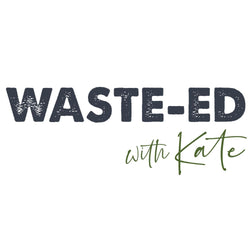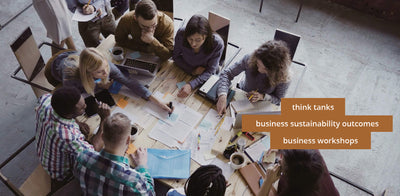How do you actually Recycle? 7 things you should know
Years ago I was offered a tour through a Recycling Center in Palmerston North by my friend Pip – The Master of Recycling. Because I wanted to further educate myself about the best ways to do things and to check if I was doing things right, I thought why not.
So off I went to the center where a couple of other mums joined us. Well in just over an hour I realized that as a human race we are either exceptionally blind or very lazy.
Pip began the presentation about what could and could not be recycled. There was a board with all of the different plastic on it. One side had what you could recycle and the other was what was not recyclable. Instantly I realized that I was recycling things that were not recyclable.
We also learnt what happens to all of the plastic and why preventing contamination (i.e making sure you are washing out your bottles) was so important.
I was blown away at the pure lack of knowledge I had of what the whole recycling process was all about.
From the education room we followed Pip through the offices and all put on hard hats and high visibility vests. I had no idea what to expect in the recycling building as I had always assumed that it was an automatic process.
We went through the doors and followed the path to where the recycling is dropped off by the recycling trucks. Wow what an eye opener. Not only was there what seemed to be an endless pile of plastic containers, there was so much contamination it was embarrassing.
Pip picked through the pile of recycling and showed us pairs of shoes, old kids swings, small bits of furniture and clothing. It seemed that the were a number of people treating the recycling bin as a Salvation Army Bin, by putting anything they didn’t want in there.
From there we journeyed inside to where all of the sorting happens. This is where I became aware that the recycling was all being hand sorted by people with the assistance of machinery.
We went up the stairs to the first place where all of the recycling comes into the building from a conveyer belt outside. There were two people standing at the first sorting point.
Pip showed me how the magnet section worked pulling out all of the metal cans etc. The paper tumbler where everything that was heavy fell through and the paper carried on up the other side. The people who hand sort the plastic containers that can be recycled, the people who hand sort all of the paper and the piles of contaminated rubbish that has been collected and cannot be recycled.
As we stood at one of the sorting points we started inspecting things that were coming in. It seemed that every couple of seconds, some form of contamination went past. I was astounded. We stood there for about 5 minutes and saw a huge number of yucky things…
For example:
- The end of a broccoli – the top part was eaten and they had recycled the rest
- Half a dozen green potatos – obviously not edible so they got recycled
- An egg carton full of eggs
- Half full hummus containers – festering in the summer heat
- Broken children’s toys
- A rotten silverbeet still in the plastic bag it came in
- A bag with a few nuts left in it
- Milk bottles and lots of other bottles that had not been rinsed
- And 9 full used disposable nappies
I literally did not feel like having lunch after seeing and smelling the rotten things that people recycle.
Here is a series of videos about recycling in New Zealand:
Part 1
Part 2
Part 3
So what are the rules?
To me going through the tour highlighted the fact that there are an enormous number of people, myself included that do not know how to recycle correctly.
So I thought I should put together a few easy pointers and rules to help people recycle properly.
1. The Recycling bin is not a recycled clothing bin or Op Shop Collection bin.
You cannot put old clothing, footwear or fabrics, babies toys or unwanted household items into the recycling bin. The right place to take these is your local op shop.
2. You can only recycle the numbers that your council has specified.
Almost every piece of plastic carries a plastic identification number on it. Just because it has a number on it does not mean it can be recycled. Check on your local council’s website to check what numbers are accepted. When buying products, think about buying things in less packaging or packaging that can be recycled.
3. You must clean the packaging before recycling
If you do not clean the packaging before you recycle it, it will end up going to landfill because it is contaminated. Milk bottles, tins, jars, and plastic containers all need to be cleaned before you put them in your recycling bin.
4. You cannot recycle green waste or food waste in the recycling bin.
It is not a green waste collection bin. If you have vegetable scraps or any household food waste there are correct ways to deal with this that does not include the recycling bin. Composting, worm farming or perhaps your council may have a green waste collection.
5. Be aware that many recycling depots hand sort your waste
Do not put any paperwork in the recycling bin that you are not happy for someone to read. Anyone could pick up your personal papers and read them. You may be better to shred them and use them in your worm farm or compost heap like I do.
6. A lot of people don’t like having to pay to recycle.
We went from having a free recycling bin to having to pay for it. Originally I was miffed at this because it meant we had to pay more but funnily enough if you sit down and work it out, it is actually much cheaper to recycle than it is to fill up your landfill bin. We pay $71.80 per year for a big recycling bin that we use for my business as well and worked out that if we were just lazy and didn't bother recycling anything it would cost us an additional $292.00 per year to throw it into the landfill aside from the fact that we would be throwing perfectly good recyclable material into the landfill too.
7. Disposable nappies are not recyclable
Do not put used disposable nappies in the recycling bin as they are hazardous waste with human excrement inside them. They have been identified by some recycling center's as baby bombs... they just may explode if you touch them.
All in all the tour was an eye opening experience and one I will never forget. If you have the opportunity to go for a tour through your local recycling center and you are keen to learn about how you can recycle better, it is well worth it. Don’t have lunch before you go through.
For me what I took from it most is that I need to be responsible for how I recycle and I am also now more aware of what can and can’t be recycled so I am checking the packaging before I buy.


